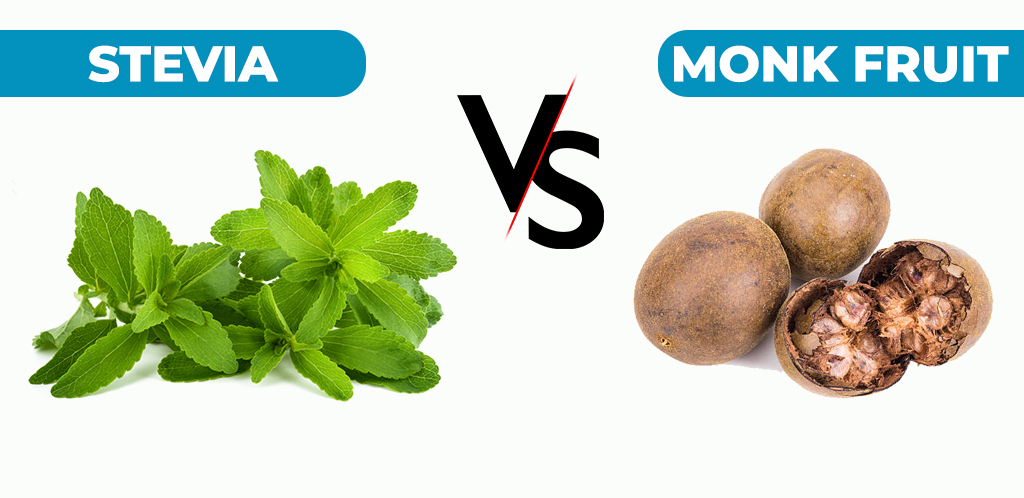In recent years, with increasing awareness about health and fitness, enthusiasts have started looking for healthy alternatives to their favourite dishes and especially desserts. And with it comes a need to replace sugar with a healthy alternative to make our desserts sweet. Artificial as well as natural sweeteners have emerged as a great alternative to various types of sugars. We will be discussing natural sweeteners below, mainly monk fruit extract and stevia, and which is a safer option for diabetics.
Monk fruit extract is a natural sweetener derived from the monk fruit, also known as Siraitia grosvenorii or luo han guo. The monk fruit is a small, green fruit native to Southeast Asia that has been used as a sweetener and medicinal herb in traditional Chinese medicine for centuries. Monk fruit extract is a zero-calorie sweetener that is about 150-200 times sweeter than table sugar. Monk fruit extract is generally considered safe for consumption and is approved for use as a food additive by regulatory agencies in many countries, including the United States and the European Union. However, some people may experience side effects, such as allergic reactions or gastrointestinal discomfort, when consuming high doses of monk fruit extract. These allergic reactions occur because it contains mogrosides, which are the compounds responsible for its sweetness. Some people may be allergic to these compounds, which can cause symptoms such as hives, itching, and difficulty breathing.
On the other hand, stevia is another natural sweetener that is derived from the leaves of the stevia plant. Stevia is also very low in calories and has a low glycemic index. Stevia is also approved as a sweetener by the FDA and is generally recognized as safe (GRAS). Stevia contains several different compounds, including stevioside and rebaudioside A, which are responsible for its sweet taste. Allergic reactions to stevia are rare, but some people may develop an allergy to one or more of the compounds in the plant. Symptoms of a stevia allergy can include itching, hives, and swelling of the face, lips, tongue, or throat.
It is important to note that some products that contain monk fruit extract or stevia may also contain other ingredients that could cause an allergic reaction. For example, a food or beverage sweetened with stevia or monk fruit extract may contain other allergens such as nuts or dairy. Additionally, some stevia products may contain other ingredients that could affect blood sugar levels, so it is always best to read the labels and choose a pure form of the sweetener. As with any dietary change, it is recommended to consult with a healthcare professional to ensure that it is appropriate for your individual needs. The GI of monk fruit extract is estimated to be 0, this is because monk fruit extract contains mainly non-nutritive sweeteners called mogrosides, which are not metabolized by the body in the same way as carbohydrates. The GI of stevia is estimated to be 0 to 1, this is because stevia contains steviol glycosides, which are not metabolized by the body.
It is worth noting that the GI of a food or beverage can be influenced by factors such as cooking method, processing, and other ingredients. For example, some commercial products that contain monk fruit extract or stevia may also contain other ingredients that can affect blood sugar levels. Therefore, it is always a good idea to read the ingredient label and nutritional information of a product before consuming it. Also, if you suspect that you may be allergic to monk fruit extract or stevia, it is best to consult with an allergist or healthcare provider. They can perform an allergy test and provide advice on how to avoid these sweeteners and manage any symptoms that may occur.
CONCLUSION :
Both of these alternatives are considered safe to use, have an extremely low GI index and very low to zero calories, and thus have very little impact on blood sugar levels. So it is up to the consumer, which option he/she wants to go with, depending on which is easily available, economical, if there are any allergic effects, after taste & overall taste.


